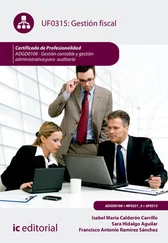As we wrote in the previous chapter, these three aspects are highly interrelated. What is planned and how it is planned have a considerable influence on people's motivation; moreover, communication influences motivation, which influences planning, etc.
These complex interactions have generally been ignored by all the social scientists who have discussed one of these three major aspects in isolation from the other two—as if they were independent. All the analyses resulting from this approach arise from the same conception, the same underlying paradigm, in spite of their apparent diversity. This basic conception, which we call the mechanistic model, consists of conceiving of a business organization as if it were merely a technical system.
Within the mechanistic model, the problem of motivating people is viewed as a matter of what (and how much) must be given to a person for him to decide to perform a task that the organization has asked him to perform. It is a matter of what the incentives have to be, and their amount. As mentioned, the issue has usually been trivialized: it was felt that for all practical purposes money was a universal motivator and that therefore the only thing to be studied in depth was how much money each task was worth.
Thus, numerous studies have been written on incentives (understood only as remuneration) and on how to relate the amount to production (the work required). However, it soon became apparent that for practical purposes these elements were not sufficient to motivate people to achieve the production levels desired by the company.
One of the anomalies that first attracted the researchers’ attention was that it was not uncommon to find that many workers did not seek high levels of remuneration, contenting themselves with producing up to, but not beyond, a certain point, even though this selflimitation of quantity produced prevented them from achieving a whole series of economic incentives.
Initially, some attempted to account for and correct the anomaly by introducing purely physiological notions such as tiredness, physical effort, etc. Another reality very common in factories was also discovered: groups of workers who voluntarily restrict production level and, in some cases, even take severe measures against any worker who exceeds the levels acceptable to the group.
The analyses of these and many other similar phenomena established the fact that, for practical purposes, a company cannot ignore a reality that was already obvious to common sense, namely that money is not a universal motivator, that people look for other things and that one must at least acknowledge that to try to convince them to sacrifice these for more money would be so expensive as to render it infeasible.
This idea has gained almost universal acceptance; it is acknowledged both by those who believe there are more valuable realities for people—the most valuable ones, in fact—that cannot be bought or sold, and also by those who think “everything has its price”.
Both schools of thought will be separated at a further point by their respective conclusions as to what is and is not practical, what does and does not motivate people, but in the world of business it has been well known for some time that talking about motivation means talking about both money and “something else”. This trivial truth is included in the hypotheses of all the most advanced theoretical discussions and practical applications.
In any case, the discovery did not lead immediately to a complete reconsideration of the question of what motivates people to act, that is, what people need to seek to satisfy through their action. Practical considerations, the search for results that were immediately applicable, only encouraged kinds of research whose purpose was to ascertain which other things, which other incentives (other than monetary remuneration) the company could provide to motivate workers. This gave rise to a series of discoveries, including the importance of working conditions, the attitudes of supervising managers, the effect of acknowledging successes achieved by the worker, etc.
On many occasions, these discoveries have been used to develop manipulative techniques based on pseudo-psychology. Examples of this type of “progress” have even become part of everyday language (expressions such as: “if you tell him he's the best, that you need him for this, you’ll see how easy it is to sell him the idea”).
These deviations aside, the fact is that we are starting to work with a deeper conception of the worker and work in organizations, at least when the problems are approached scientifically. One grows aware of the need to take into account people’s psychological aspects when attempting to keep them motivated.
Also, in more detailed studies that investigated factors that influenced productivity and their relationship with worker satisfaction and motivation, a series of variables appeared that influenced both motivation and satisfaction but were due to none of the incentives controlled by the company.
The classic studies carried out on the subject by Elton Mayo and Fritz Roethlisberger in the Western Electric Company's Hawthorne plant (over a period of several years at the end of the 1920s and early ‘30s) had four distinct phases. The researchers started by focusing almost exclusively on the workers' productivity; from there they went on to analyze their satisfaction; they then realized that it was necessary to analyze their motivation. They thus reached the conclusion that productivity, satisfaction and motivation were closely interrelated and had to be considered as a whole, but that the relationships among them were by no means easy to understand and explain 1.
For our purposes, the important point to remember with respect to motivation is this: the Hawthorne experiments established that there are stimuli which had a considerable effect on workers satisfaction and motivation but did not originate from the company itself, that is, they were not any of the incentives controlled by the organization.
The origin of these stimuli lies in the social situation created by the activities required to perform the work. These arise as a result of interactions among the workers without the company being able to “control” these motivating factors, except to a very limited extent. This “lack of opportunity for control” is particularly apparent in those cases, which occur with some frequency, in which the above-mentioned social stimuli motivate workers in the direction opposite to the one intended by the company (through the use of incentives directly administered by it). This is the case, for example, when groups of workers in a factory set standards regarding acceptable production levels for the members of the group, implementing a variety of sanctions against any member who exceeds this level.
The psycho-sociological models
The consistent confirmation of these observations has led both researchers and businessmen to create a new conception (or paradigm) of how the organization is to be understood. This new conception has meant the appearance of an organic model that transcends and encompasses the simple technical system.
In contrast to the mechanistic conception we have been referring to until now is a psycho-sociological conception. The organization tends to be considered as a social organism in which people take part not only to achieve incentives offered by the company but also to satisfy other needs. Another factor that is considered is that the satisfaction of some of the organization's members will depend on specific interactions with other people within the organization.
In short, a person's motivation to perform a specific task is no longer ascribed to the incentives offered by the company as if they were its sole cause. True, these incentives produce a certain degree of motivation, but when a person carries out his work, he may also discover another series of factors that contribute to generate his motivation.
Читать дальше












